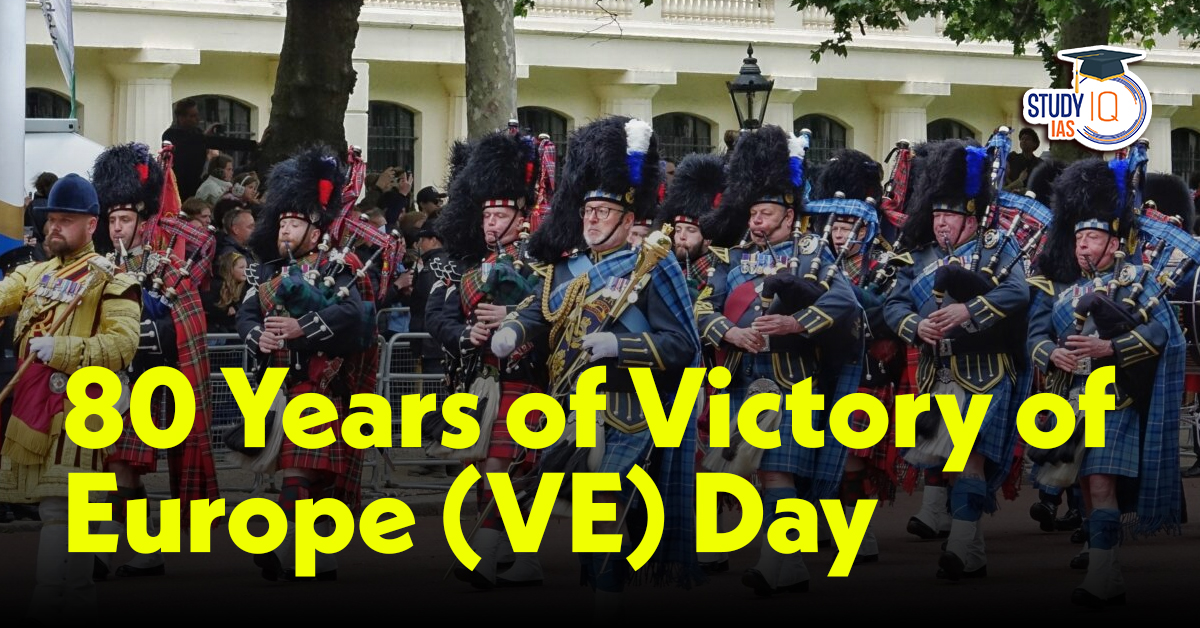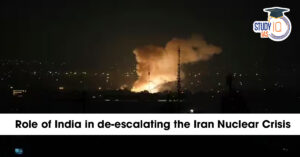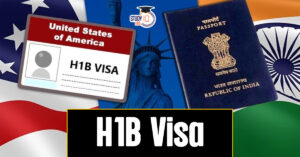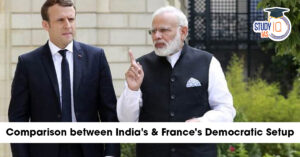Table of Contents
Context: This year is the 80th year anniversary of Victory of Europe (VE) Day.
80 Years of Victory of Europe (VE) Day: Background
End of World War II in Europe (May 1945)
- On May 8, 1945, Germany surrendered, ending the war in Europe.
- This day is remembered as Victory in Europe (VE) Day.
Europe’s Condition Post-War
Europe was free but destroyed and bankrupt.
- After the war, the focus was on rebuilding and ensuring that such a war never happens again.
- The motto was: “Never again.”
Post-War Europe
- After WWII, America helped rebuild Western Europe with two major efforts:
- The Marshall Plan (financial aid for rebuilding)
- NATO (military alliance for defense)
- S. President Truman said they were “two halves of the same walnut” — both necessary for peace.
- This led to closer European integration, eventually forming the European Union.
Indian Contributions to World War II and Victory in Europe
Massive Military Participation
Over 2.5 million Indian soldiers served under British command in various theatres of World War II — the largest volunteer force in history at the time.
- Indian troops fought in North Africa, Italy, the Middle East, and Southeast Asia, providing critical manpower during key campaigns, including in Europe.
Scientific Contribution
Kolachala Sitaramaiah, a scientist from Andhra Pradesh, contributed to Soviet petrochemical research during the war.
- He developed kerosene-based fuels and lubricants that improved the performance of Soviet tanks in freezing conditions.
- His work played a crucial role in Soviet success at the Battle of Kursk (1943) — the largest tank battle in history — where Soviet T-34s outperformed German Panzers and halted Nazi ground offensives.
Air Power
Air Chief Marshal Idris Hasan Latif, an Indian of Yemeni descent, joined the Royal Indian Air Force in 1941.
- He was deployed in Europe and Burma, flying Hawker Hurricanes to engage enemy forces and support ground troops.
- Latif later became Chief of the Indian Air Force (1978) and Ambassador to France (1985-88), contributing to defence diplomacy and India’s modern air power evolution.
Economic Support & Civilian Sacrifice
India provided critical economic support, including:
- Raw materials, like iron, coal, jute, and textiles.
- Funds through war bonds and taxes.
- India faced economic hardship, inflation, and even famine (e.g., the Bengal Famine of 1943), partly because resources were diverted for the war effort.
Present Global Scenario
- Rising Conflict Today: Russia’s invasion of Ukraine is seen by European leaders as not just a threat to peace, but a threat to Europe itself.
- French President Macron calls Putin “an imperialist trying to rewrite history.”
- Uncertainty about U.S. Role:S. President Donald Trump’s unclear stance on NATO and Ukraine has worried Europe.
- Europe fears the U.S. might pull back from NATO support, so it is preparing for its own defense.
- Europe is Rearming: Countries like Germany, France, Britain are increasing defense spending.
- The EU has a new defense strategy, and countries are being told to stockpile emergency supplies.
- Nations like Poland and the Baltics are taking serious steps, even leaving anti-landmine treaties due to fear of Russia.
|
Fact |
|
- Insular Commemorations: European countries today often make WWII commemorations seem like a purely European event, ignoring the contributions of:
- Africans, Asians, Australians, Caribbean soldiers, and others who fought and died in the war.
- This reflects a narrow perspective, especially when global peace is again at risk.


 Iran Nuclear Crisis and India’s Role f...
Iran Nuclear Crisis and India’s Role f...
 H1B Visa Program, Beneficiaries, Eligibi...
H1B Visa Program, Beneficiaries, Eligibi...
 Comparison Between India & France's ...
Comparison Between India & France's ...

























